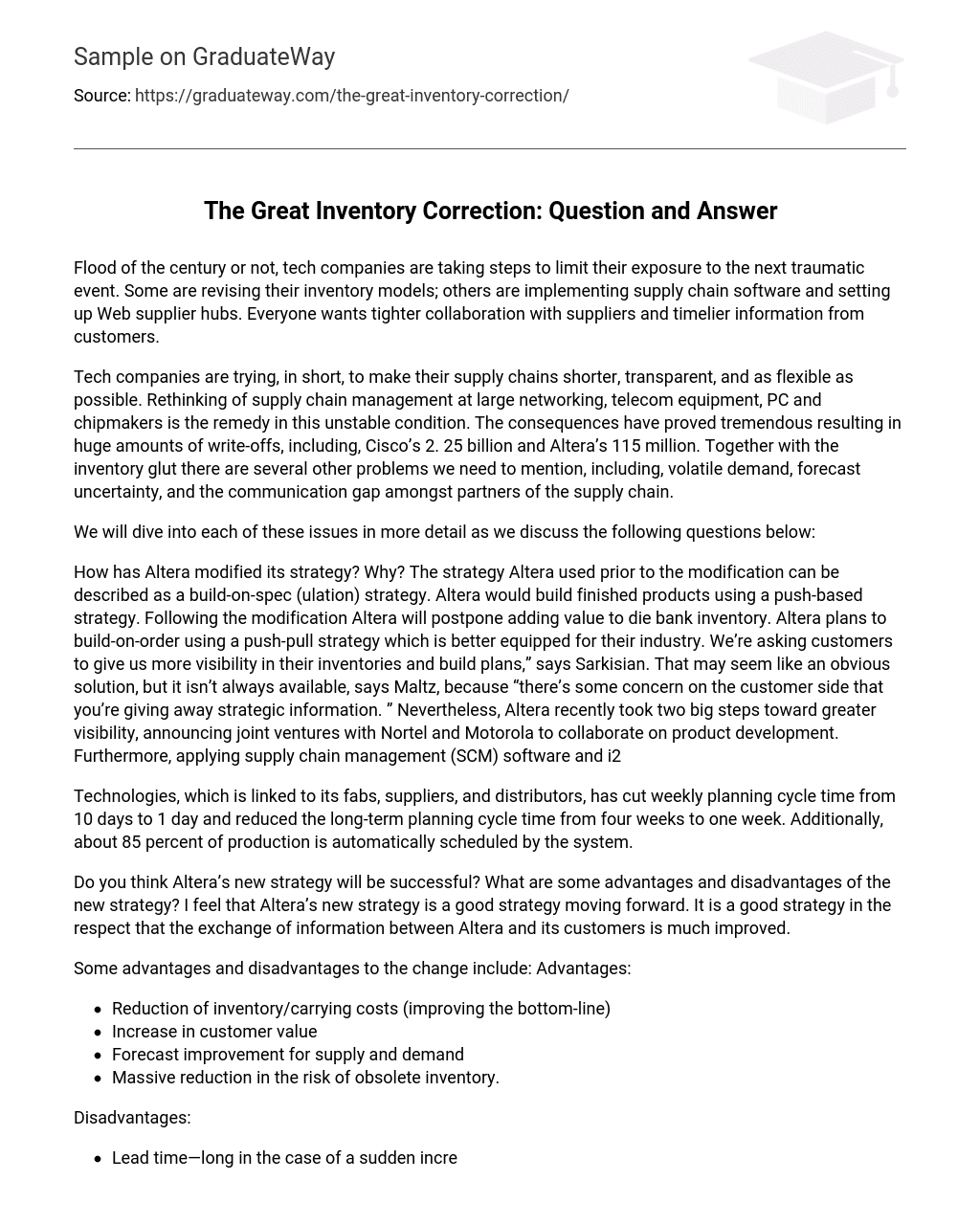Flood of the century or not, tech companies are taking steps to limit their exposure to the next traumatic event. Some are revising their inventory models; others are implementing supply chain software and setting up Web supplier hubs. Everyone wants tighter collaboration with suppliers and timelier information from customers.
Tech companies are trying, in short, to make their supply chains shorter, transparent, and as flexible as possible. Rethinking of supply chain management at large networking, telecom equipment, PC and chipmakers is the remedy in this unstable condition. The consequences have proved tremendous resulting in huge amounts of write-offs, including, Cisco’s 2. 25 billion and Altera’s 115 million. Together with the inventory glut there are several other problems we need to mention, including, volatile demand, forecast uncertainty, and the communication gap amongst partners of the supply chain.
We will dive into each of these issues in more detail as we discuss the following questions below:
How has Altera modified its strategy? Why? The strategy Altera used prior to the modification can be described as a build-on-spec (ulation) strategy. Altera would build finished products using a push-based strategy. Following the modification Altera will postpone adding value to die bank inventory. Altera plans to build-on-order using a push-pull strategy which is better equipped for their industry. We’re asking customers to give us more visibility in their inventories and build plans,” says Sarkisian. That may seem like an obvious solution, but it isn’t always available, says Maltz, because “there’s some concern on the customer side that you’re giving away strategic information. ” Nevertheless, Altera recently took two big steps toward greater visibility, announcing joint ventures with Nortel and Motorola to collaborate on product development. Furthermore, applying supply chain management (SCM) software and i2
Technologies, which is linked to its fabs, suppliers, and distributors, has cut weekly planning cycle time from 10 days to 1 day and reduced the long-term planning cycle time from four weeks to one week. Additionally, about 85 percent of production is automatically scheduled by the system.
Do you think Altera’s new strategy will be successful? What are some advantages and disadvantages of the new strategy? I feel that Altera’s new strategy is a good strategy moving forward. It is a good strategy in the respect that the exchange of information between Altera and its customers is much improved.
Some advantages and disadvantages to the change include: Advantages:
- Reduction of inventory/carrying costs (improving the bottom-line)
- Increase in customer value
- Forecast improvement for supply and demand
- Massive reduction in the risk of obsolete inventory.
Disadvantages:
- Lead time—long in the case of a sudden increase in demand
- Customer’s readiness and ability (organization, finance, et cetera)
- Adversity.





